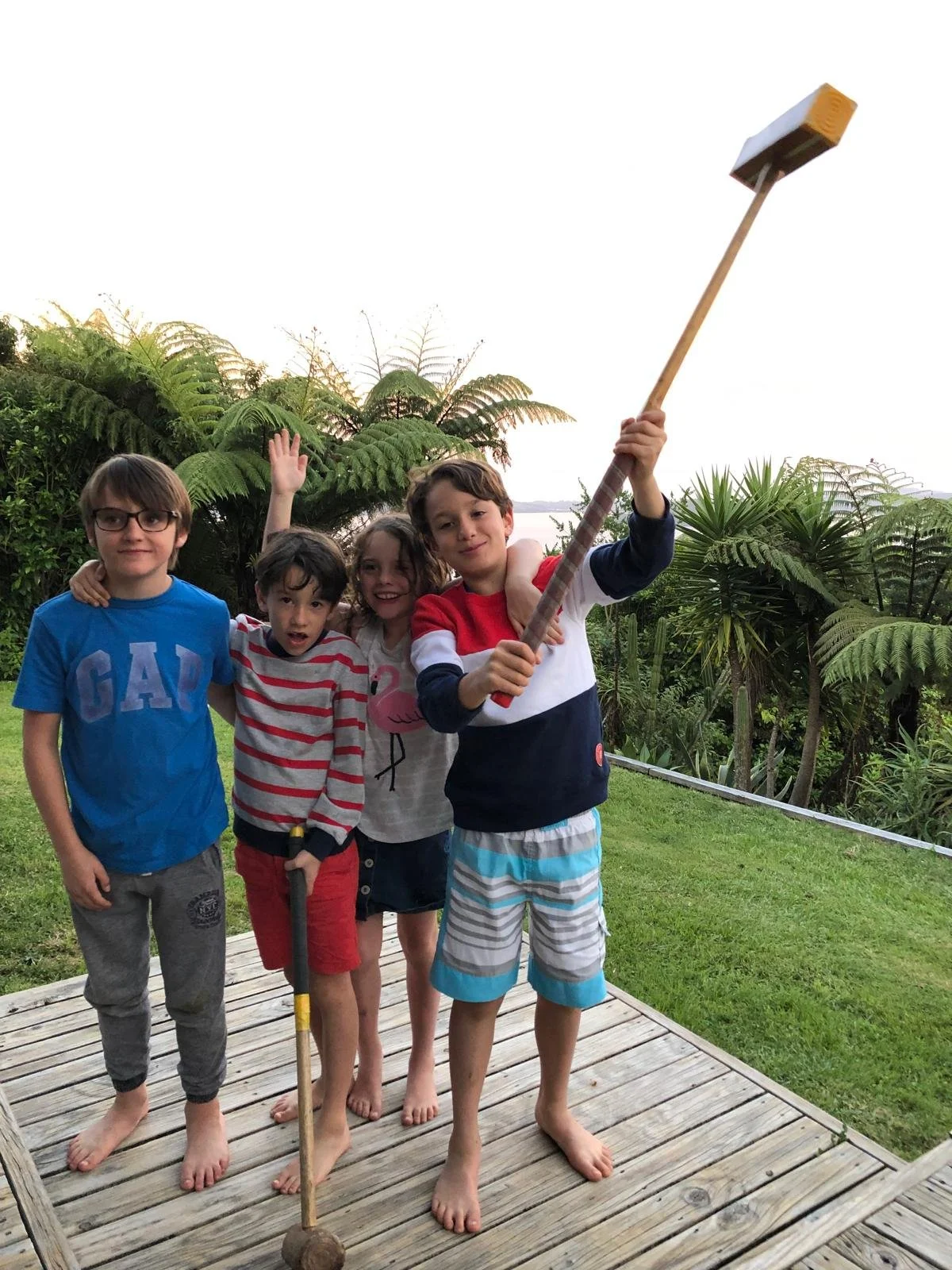Introduction to Bush Croquet
The object of the game
Bush croquet is a deceptively simple game.
The objective is to kill one’s opponents. This is achieved by manoeuvring a croquet ball through a series of hoops more rapidly than the other players, from a start stick that marks the beginning of the bush croquet course to a poison stick that marks the end of the course. Any ball that strikes the poison stick, having passed through all of the course’s hoops, becomes poison. A poison ball can then strike and kill (i.e. eliminate) the balls of other players. The winner of the game is the possessor of the last remaining poison ball.
Equipment and number of players
A game of bush croquet requires the following basic equipment:
6 x croquet hoops
croquet balls
croquet mallets
a start stick
a poison stick
The number of players able to participate in any single game is limited only by the number of available balls and mallets. It should be noted, though, that any number of players above about eight players can make for a very long game. For numbers greater than eight, it is suggested that the directions for tournament play be followed [link to come].
Optional (and recommended) equipment includes:
a barbecue
a decent stereo
outdoor lighting or, for advanced players, individual miner’s helmets (with a little lamp on the front) for night-time play
a well-stocked beer fridge or wine cellar
The Course
Bush croquet can be played practically anywhere. Any patch of lawn or area of park, no matter the size, can be employed as a bush croquet course.
The layout of a course should be determined to take best advantage of natural and artificial obstacles and boundaries. A good bush croquet course forces players to demonstrate an array of different strokes, in order to avoid and manage the course’s hazards.
The beginning of a course is defined by the placement of a start stick. A poison stick marks a course’s end. The six hoops required for regulation play can be placed anywhere between these two sticks, in any configuration.
Players must pass through the hoops in order, from hoop one through to hoop six. Since each course layout is different, the course’s proprietor should offer a tour of the course prior to the start of play, indicating the position and order of each of the hoops.
All courses will have natural boundaries, created by, for example, the edge of a house, a perimeter fence, a garden, or a water feature. The rules for playing an out of bounds ball – any ball that comes to rest in or alongside an obstacle or boundary – are set out in section 5 of the official rules.
Check back soon for diagrams and photos of some established bush croquet courses.
